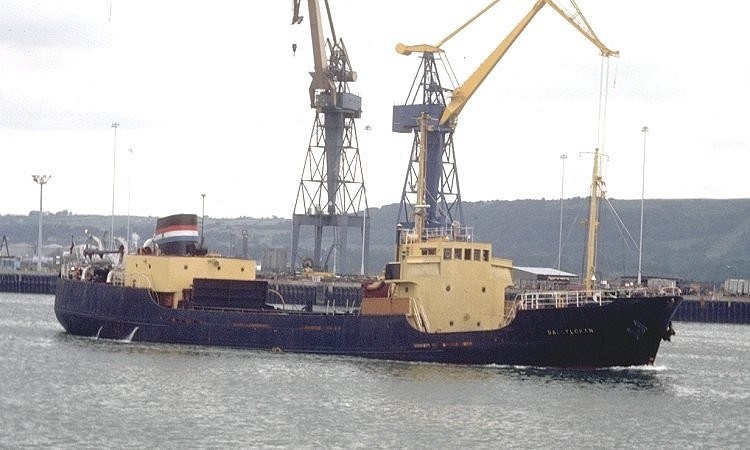John Kelly & Co. bought the property from Maria McClements on ………….
Kellys were at one point the largest coal merchants in the north of Ireland. In the 1950s and early 1960s, I remember being at Cranfield and seeing colliers from their fleet of small coasters regularly heading into Carlingford Lough, bringing cargoes of coal up the still-operating seaward leg of the Newry Canal, right into the heart of the town.

Kellys still exists and is still a large coal supplier. Their website states:
“John Kelly, after whom the firm is named, died in 1904 but it was his father, Samuel Kelly, … who set up the business at 2 Queen’s Quay, Belfast in 1840. Samuel was very much a product of the Victorian age, a self-made man who was listed in the street directories of the 1850s as a “grocer and commission coal merchant.”
“For decades the ‘Kelly’s Coal Boats’ brought in huge loads from Blyth, Garston and Swansea and the young Kelly worked industriously to build his fleet. By the time of Samuel’s death in 1877 at the age of 59, he had a fleet of five ships, with two others passed to partners and one that had been lost – an occupational hazard given the treacherous easterly winds along the Co Down coast. …
“…the Kelly’s fleet – recognisable by their funnel colours of black, red and white – grew to 13.
“Through the years of the First World War the company prospered – and as 1919 drew to a close John Kelly Ltd and their associated companies had almost 30 ships in the fleet, all carrying cargoes at high freight rates, many taking coal to France from south Wales.
“Those difficult war years and the continuing international shortage of coal after the conflict ended prompted Samuel Kelly, who in 1921 became Sir Samuel Kelly, to begin the ambitious and ultimately abortive attempts to mine coal in Co Tyrone.”
So Kellys bought the Poyntzpass business almost at the height of their power(?) and at a time of an international coal shortage. The Northern Mine Research Society website states:
“Coal was being mined at Tullyniskan, in east Tyrone, by 1654 and it had been discovered at Drumglass in the 1690s. Then, in 1723, Francis Seymour, under a lease from the archbishop of Armagh, began mining from a 156 feet deep Engine Pit at Brackaville, later known as Coalisland. By 1834 the principal colliery at Drumglass had two steam engines, the largest (70 horsepower) was pumping water and the other (30 horsepower) wound the coal from a 384 feet deep shaft. The overall seam thickness was about 48 inches, including a shale parting of 12 inches.
“The Tyrone coalfield never achieved what was expected of it, however, because severe faulting made mining difficult. Work had all-but ended by 1920.”
And yet this was almost exactly the time that Sir Samuel Kelly chose to invest in and try to resuscitate the almost defunct Tyrone coal mines!
If successful, he would still have had transport the coal, and perhaps the ailing canal was still a good way for him to transport it from the mine? If so, then purchasing Joseph Searight’s business and coal yard at Poyntzpass would have made perfect sense in an integrated production and distribution plan.
On …………, Kellys sold the business and property to my father, Henry Reside Clarke, then aged …., for the sum of £225! (plus an annual rental still payable to the Close estate of …….)